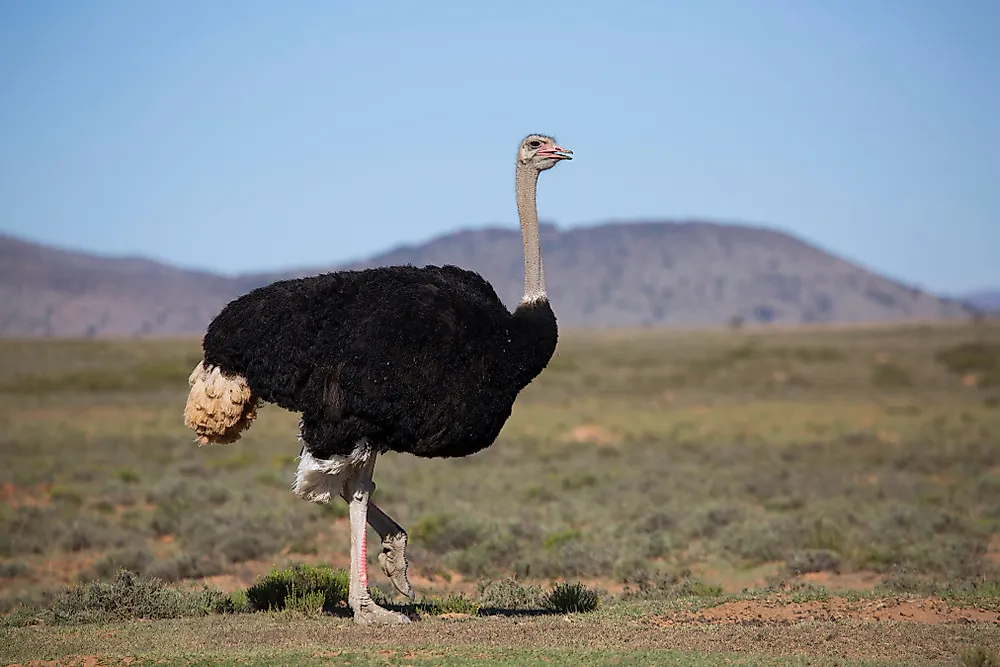The Heaviest Living Birds In The World

Birds have astounded and intrigued humans for centuries. These feathered creatures are known for their unique characteristics which include toothless beaks and laying of eggs that require incubation by one of the parents. Birds also soar through the skies far above humans and perhaps inspired the invention of modern-day airplanes. But wait, not all birds can fly! In fact, the heaviest living birds on Earth are all flightless. Many birds have lost their ability to fly during the evolutionary process, and this trait was primarily observed in areas where these birds had fewer predators (of course, before the arrival of humans with their pets and pests). Since nothing happens in evolution without a cause, the large sizes of these birds were associated with certain benefits. Large size has been linked to longer life spans. Below is a list of the heaviest living birds and the places they inhabit.
The Heaviest Birds
Common Ostrich
Number 1 on the list is the Common Ostrich. An adult ostrich can weigh between 229 and 345 pounds and measures around 6 feet in height! They are the fastest runners of any bird. The Common Ostrich is native to savannas of the African continent. The birds have also been introduced to captive breeding farms in Australia, Israel, and New Mexico in the US, primarily for extracting their feathers for commercial purposes. Some of them who have escaped these farms now make up wild populations in these regions.
Somali Ostrich
The second largest bird is also an ostrich. The Somali Ostrich is native to the Horn of Africa and prefers the bush to wide open land. These birds weigh from 198 to 286 pounds. Although similar in appearance to the Common Ostrich, the two birds are different species.
Southern Cassowary
Moving off the African continent is the Southern Cassowary which is native to Australia, Indonesia, and New Guinea. They inhabit the rainforest areas. This flightless bird weighs between 99 and 187 pounds. Its appearance is quite distinct: a black body with a vibrant blue and featherless head.
Northern Cassowary
Following in size is the Northern Cassowary located in New Guinea. They weigh around 100 pounds and closely resemble the Southern Cassowary though with a bright, orange neck.
Emu
Number 4 on the list is the Emu. A bit smaller in weight than the previous birds, it weighs between 72 and 154 pounds and can reach up to 6.2 feet in height. The Emu is endemic to Australia.
Emperor Penguin
The Emperor Penguin takes this list to Antarctica. Penguins are widely recognized for their tuxedo-like appearance. The Emperor Penguin weighs anywhere between 49 and 99 pounds. They can grow to around 4 feet tall making them the size of a child. While they may be flightless, this bird can swim with the agility of flight and reaches speeds of 5.6 miles per hour.
Greater Rhea
Found in eastern South America, the Greater Rhea weighs from 44 to 60 pounds. This bird is followed by the Dwarf Cassowary which lives in the mountain forests of New Guinea, Yapen Islands, and New Britain and weighs around 44 pounds on average. Also located in South America, the Lesser Rhea inhabits the Patagonia region and reaches between 33 and 63 pounds.
King Penguin
Last on the list of heavy, flightless birds is the King Penguin. Similar in appearance to the Emperor Penguin, the King Penguin weighs only 24 to 35 pounds. This bird breeds on subantarctic islands like those off the southern coast of South America.
Endangered Populations
Some of the birds on this list are also found on another more disturbing list. The International Union for Conservation of Nature (IUCN) assesses the conservation status of animals around the world and has created the Red List. The threatened categories on this list are: Vulnerable, Endangered, and Critically Endangered. Three of the above birds are found on the IUCN Vulnerable list. These include the: Somali Ostrich, Southern Cassowary, and Northern Cassowary. The major reasons for their population decline are hunting and habitat loss. Humans hunt the Somali Ostrich for feathers and eggs. Fortunately for the Southern Cassowary, the habitat destruction in Australia has now stopped which will hopefully promote population increases. The Northern Cassowary suffers habitat loss due to deforestation. Greater protection measures are needed if these large, flightless birds are to avoid the Endangered list.
The Heaviest Living Birds In The World
| Rank | Bird | Average Mass (in kg) | Maximum Mass (in kg) |
|---|---|---|---|
| 1 | Common Ostrich | 104.00 | 156.80 |
| 2 | Somali Ostrich | 90.00 | 130.00 |
| 3 | Southern Cassowary | 45.00 | 85.00 |
| 4 | Northern Cassowary | 44.00 | 75.00 |
| 5 | Emu | 33.00 | 70.00 |
| 6 | Emperor Penguin | 31.50 | 46.00 |
| 7 | Greater Rhea | 23.00 | 40.00 |
| 8 | Dwarf Cassowary | 19.70 | 34.00 |
| 9 | Lesser Rhea | 19.60 | 28.60 |
| 10 | King Penguin | 13.60 | 20.00 |











